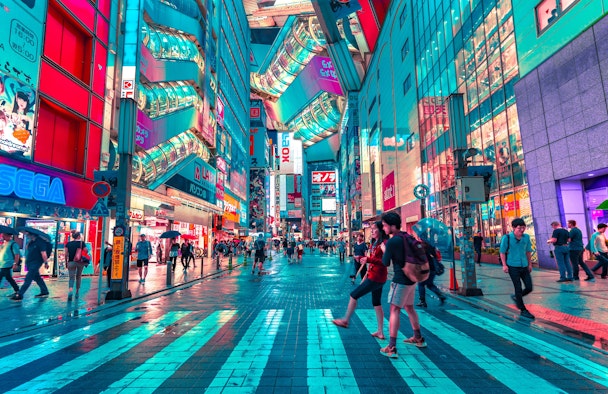Immersive technologies are shaping the future of e-commerce right now
The future of e-commerce may or may not be in the ‘metaverse.’ But for The Drum’s e-commerce deep dive, augmented reality (AR) expert Caspar Thykier tells us one thing’s for sure: immersive tech is pushing the boundaries of physical and digital stores alike right now.

The future of e-commerce may be in the metaverse, but don’t miss the strides already being made by immersive tech / Jezael Melgoza via Unsplash
The foundations have been laid for the mass adoption of immersive technologies. Advancements in hardware, software, tools and distribution channels have made augmented reality (AR) a viable, robust and affordable solution for the mass market. Increased adoption of immersive technologies has followed, as well as an uptick in the desire to use them in everyday life.
Leading e-commerce brands are evolving to capitalize on these advancements, reaping the benefits of the higher engagement, dwell times, memory recall and sales success these technologies afford.
Advertisement
The evolution of e-commerce
AR developments, spurred by the pandemic, have been instrumental in e-commerce’s steep rise. High street stores closed, customers stayed at home and retailers needed to be online. Customers haven’t looked back.
While the pandemic was a catalyst, online shopping is nothing new. Online convenience commerce has been around since the 90s, but what we’re seeing now is a consumer desire for more than just convenience, influenced by lives lived through smartphone screens (and increased exposure to immersive technologies).
Consumers are demanding experiences that put them at the center of the buying process – immersive, contextually-relevant experiences, bridging the gap between in-store and online.
Consumers want to be able to create something unique that fits their needs; 47% would pay extra for a product if they could customize or personalize it using immersive technologies.
Advertisement
Information is king. 42% want to use immersive tech to assess product features and experience products before purchase (from advanced features and benefits to how the product will look in situ). And trust is vital, with 61% of consumers stating they want greater transparency. Consumers want to know where their products come from, how they are produced, and what impact they have on the environment.
To meet these demands and stay ahead in the increasingly competitive world of e-commerce, retailers have turned to immersive technologies and the solutions they provide.
The immersive solution
With traditional commerce, the most engaging retail experiences happened in-store. Now, with AR, retailers can provide those experiences at home, while providing more information than ever before.
The most pioneering and well-known of these is ‘try before you buy’: a long-term strategy for brands looking to engage younger audiences, improve conversion and reduce returns. Recent reports have shown just how powerful virtual product visualization can be, increasing sales and propensity to purchase. Conversion rates can increase by 94% for products supported by AR try-on technology, with a 5% reduction in the rate of returns.
Suggested newsletters for you
3D technology in e-commerce spaces is also on the rise, providing value that 2D product images can’t: showing the product detail, material and quality from all angles, increasing conversion by up to 250%.
Immersive technologies can also carry that heightened experience over to customer loyalty. The Covid-19 pandemic has contributed to the increasing value placed on how we appear online, both socially and professionally, especially for younger generations. The value of virtual goods has rocketed: Gucci’s virtual 25 sneaker opened up new and interesting opportunities that can be leveraged with extended reality (XR) technology.
What’s next?
With the explosion of the metaverse and web3 platforms, retailers are faced with the question of where to start, what to build and – most importantly – what will truly be transformative (rather than just a marketing gimmick)?
Retailers need to consider what will lead to tangible results and return on investment. While the future of e-commerce may be in the metaverse, there’s still so much untapped potential in the here and now with AR.
With the rise of spatial computing, telepresence and holographs, as we move headlong into multiple virtual worlds things are definitely not done changing in the world of immersive tech.
Perhaps we will see shopping in the metaverse, or a greater focus on our digital twins and the use of avatars for customer loyalty. What we do know, right now, is that camera and spatial computing are enabling richer, more immersive experiences for brands and end users. It is a trend that is only going to accelerate as we move from mobile devices to headsets and glasses of the future over the next decade, and one that will continue to shape forward-thinking industries such as e-commerce.
For more on immersive selling experiences, head over to our e-commerce hub.
Content by The Drum Network member:

Zappar
Zappar is the world’s leading augmented reality platform and creative studio for mobile and web apps. Since 2011, Zappar’s mission has been to democratise AR...
Find out more
